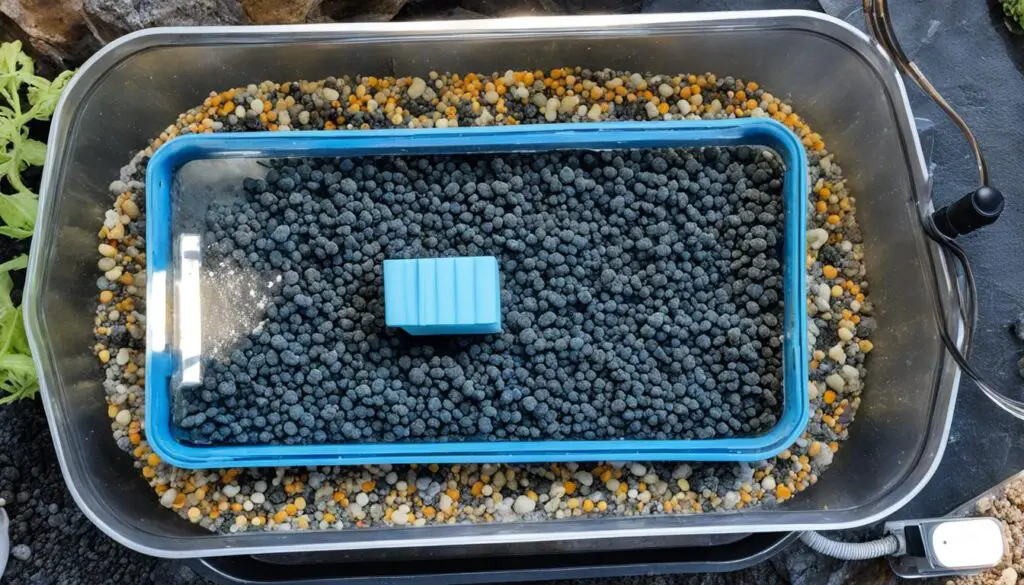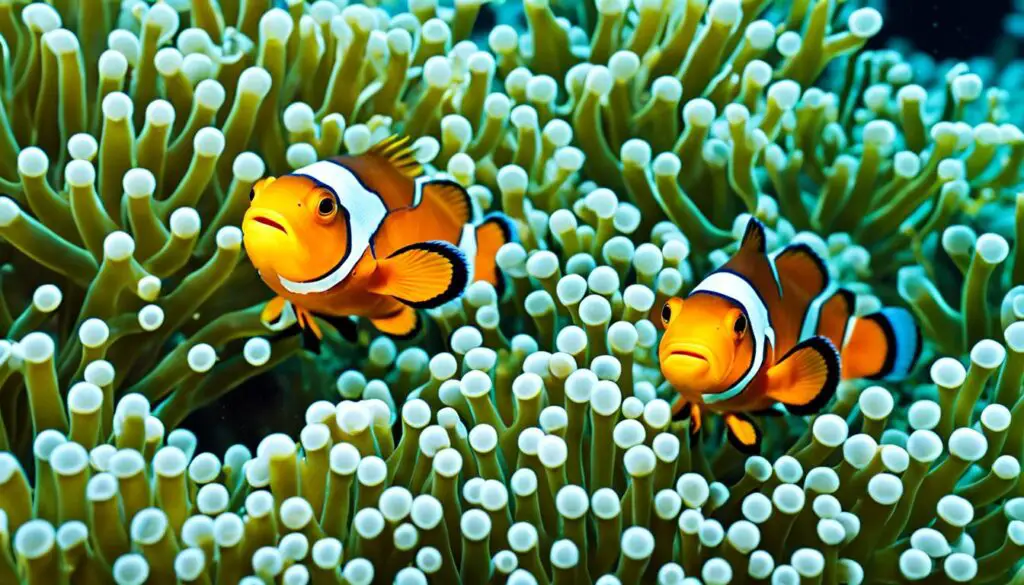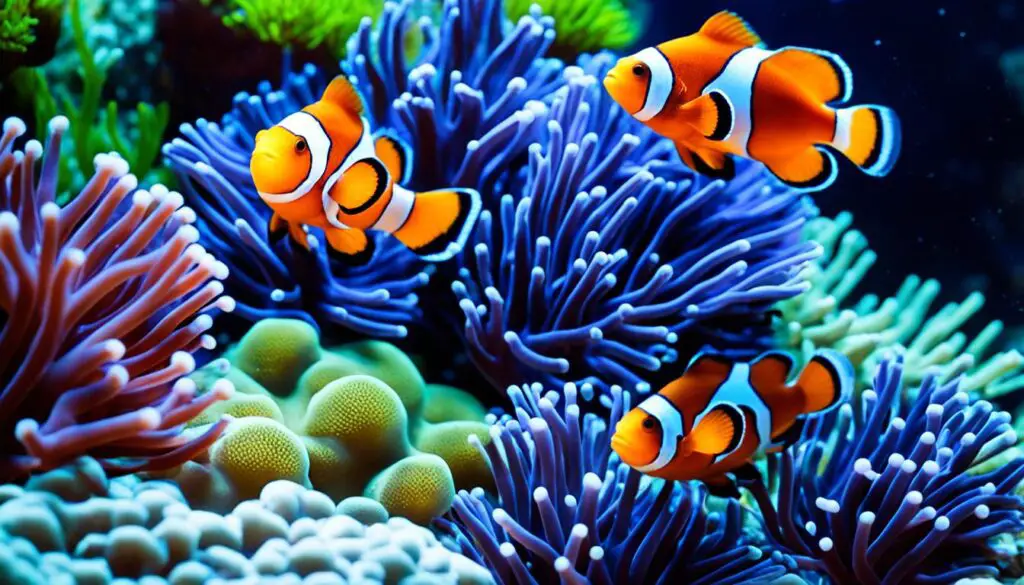Clownfish Breeding 101: Expert Techniques for Success
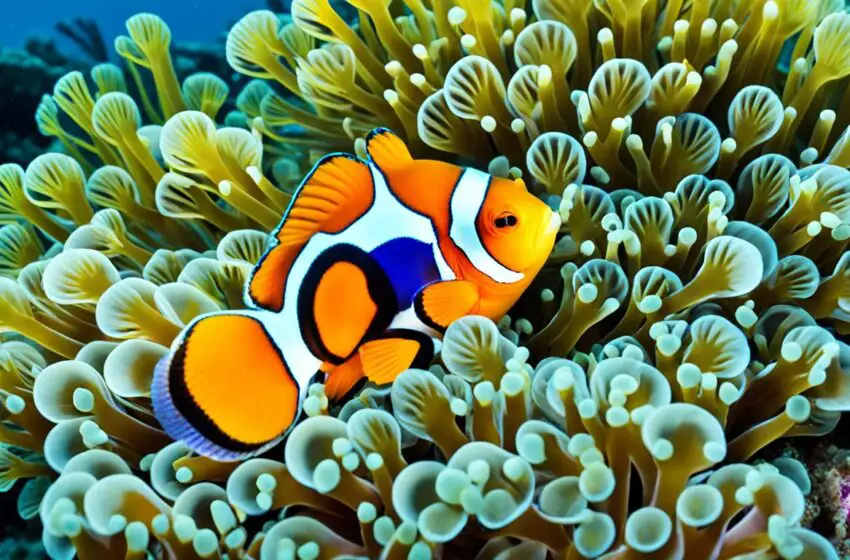
Breeding clownfish is a journey filled with reward and wonder for fish lovers. You will see new life emerge and help protect these amazing fish. It’s key to learn the right strategies for success and for your fish’s happiness.
This guide offers proven advice on breeding clownfish from top sources. With these tips, you’ll boost your breeding success and enjoy a lively fish tank at home.
It doesn’t matter if you’re just starting out or have kept fish for a while. This guide equips you with the essentials for breeding clownfish. You’ll learn how to choose the best pair, set up the perfect breeding space, and look after the eggs and babies. Let’s explore the exciting world of clownfish breeding!
Key Takeaways:
- Breeding clownfish can be a rewarding and fascinating experience.
- Expert techniques can increase your chances of success.
- Creating the ideal breeding environment is crucial for success.
- Proper care is essential for the health and growth of clownfish eggs and fry.
- By following expert techniques, you can ensure the health and vibrancy of your marine life.
Choosing a Mated Pair for Breeding
To breed clownfish, start by picking a mated pair. You can do this by buying a pair from a trusted store. Or, you can select two young ones and let them bond.
Clownfish can change their sex. The top one becomes female, and the next one turns male. Watch how they act to spot the right pair.
Give them a friendly setting to help them bond. A big tank with things like live rock and sea anemone is great. It gives them places to hide and act like they would in the wild.
Feed them well and regularly. High-quality flakes, pellets, and frozen food mix make a good diet. This keeps the pair healthy and energetic.
Clownfish Bonding Process
The way clownfish bond is amazing. After pairing, they swim, rub, and even change colors in sync.
Keep an eye on them as they bond. If they get too aggressive or look stressed, help them calm down. This protects their bond.
“Observing the bonding process between clownfish is truly captivating. Their compatibility and dedication to each other is simply remarkable.” – Marine Aquarist Expert
Once they’re really bonded, they’ll act like they want to breed. They’ll clean an area, dance, and lay eggs. Use a flat rock or a special grid for breeding to help them breed better.
Be patient with clownfish breeding. It takes time for them to get ready to breed. But seeing them reproduce is rewarding.
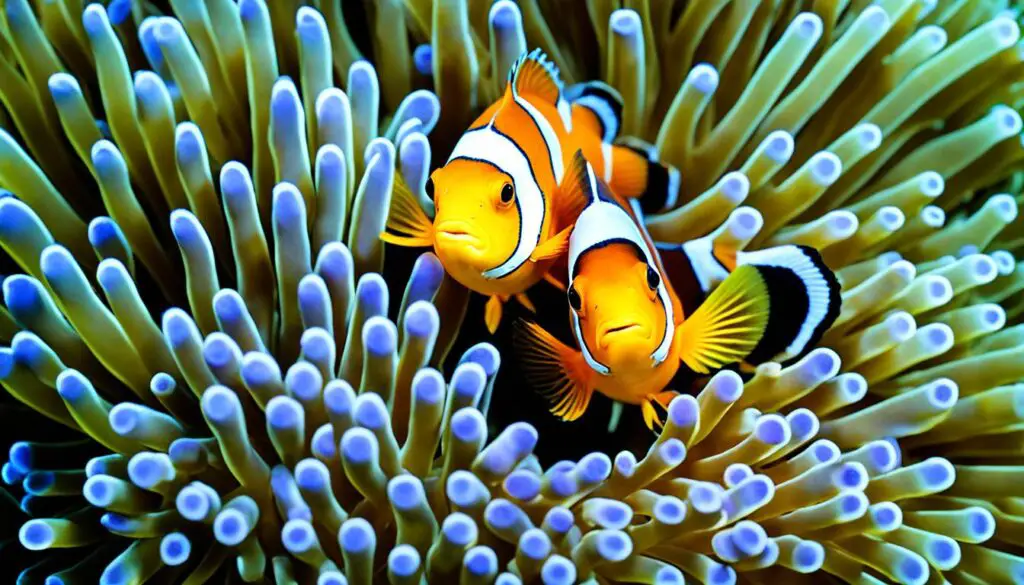
Creating the Ideal Breeding Environment
To help clownfish breed successfully, you must make a great tank for them. This includes the right tank setup and water conditions. Also, good lighting and lots of hiding places are key. Doing this boosts the chance of breeding.
Tank Setup
First, build a saltwater tank with live rock and anemone. Live rock is not just nice to look at. It gives clownfish spots to hide their eggs. Anemone is like their home and helps them want to breed.
Water Conditions
It’s vital to keep the water clean and stable for your clownfish. Make sure the temperature, salt, and pH are right. Check these often with a water test kit to keep it all in check.
Lighting
Clownfish need natural-like light to thrive. Use a timer for your lights to copy daylight times. This helps with breeding and makes your fish happy.
Hiding Places
Clownfish must have places to hide. Set up caves, structures, or some live plants. This makes them feel safe and ready to breed. Having lots of hiding spots also makes your tank look good and interesting.
Building the perfect breeding space needs the right tank, water, light, and hiding spots. A great home for your clownfish means they’re more likely to breed well. It also keeps them healthy and happy.
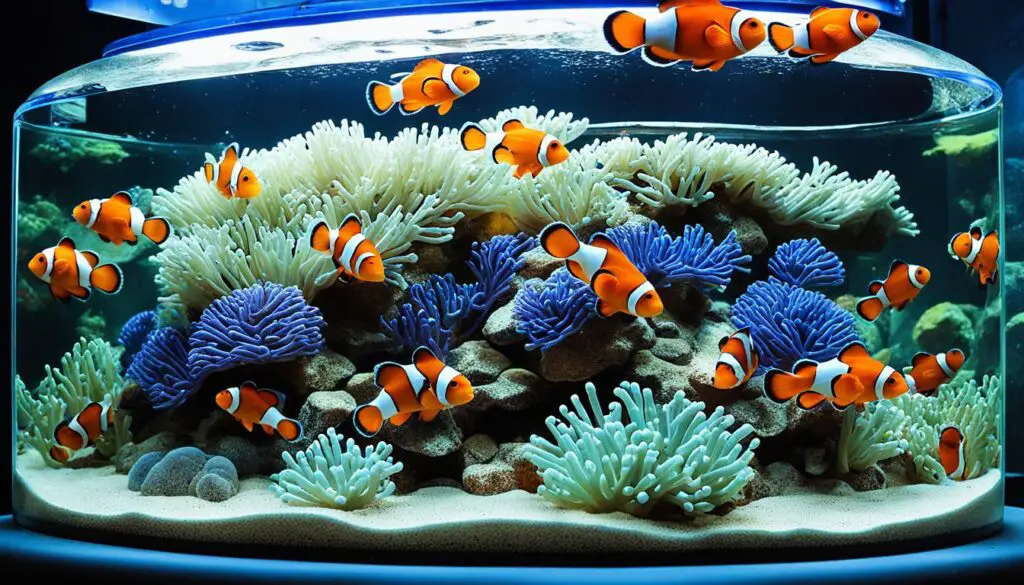
Caring for Clownfish Eggs and Fry
After clownfish eggs are laid, proper care is key for them to develop well. The male clownfish plays a big role in protecting the eggs. In about a week, they’ll hatch, unleashing tiny fish eager to face the world.
The first week is crucial for the fry’s diet. Start by feeding them live rotifers. These are tiny creatures that give the fry important nutrients. Then, move on to live brine shrimp as they grow, to keep them healthy and growing well.
Keeping the water clean is just as important as feeding. Change the water often to maintain a good environment. Make sure the water’s temperature and salt levels are just right. This will help the fry thrive and stay healthy.
Looking after clownfish eggs and fry means watching them closely. It means making sure they eat well and live in clean water. A safe and caring space is essential for the baby clownfish to grow and be healthy.
FAQ
What is the first step in breeding clownfish?
Start by getting a mated pair of clownfish. You can buy them or make your own pair. To make your pair, choose two young ones to grow together.
How do clownfish change their sex?
Clownfish change sex based on their role in the group. The top fish becomes female. The next in line becomes male.
How can I create a harmonious environment for clownfish bonding?
Set up the tank right for your clownfish. Use live rock and anemone. Keep the water just right, mimic the sun’s natural movements, and add plenty of hiding spots for them to be safe.
What should I do once the clownfish eggs are laid?
Once laid, keep a close eye on the eggs. The male takes care of them. They hatch in 7 to 10 days. Start feeding the newborns with live rotifers, then move to live brine shrimp and keep their water fresh.

